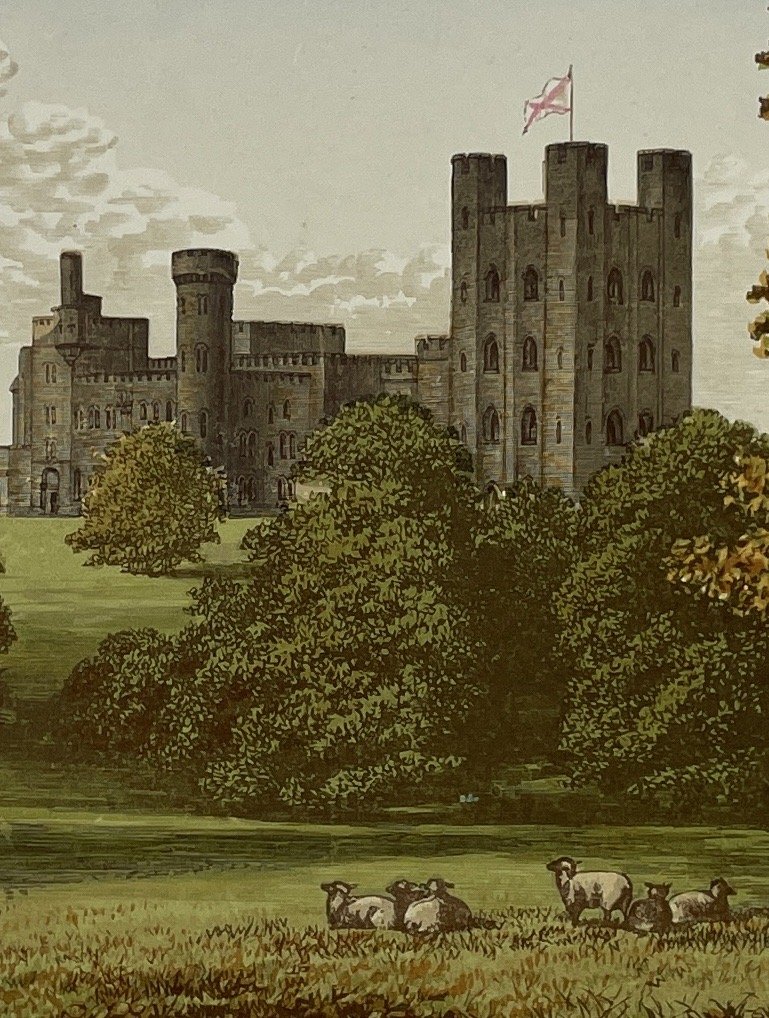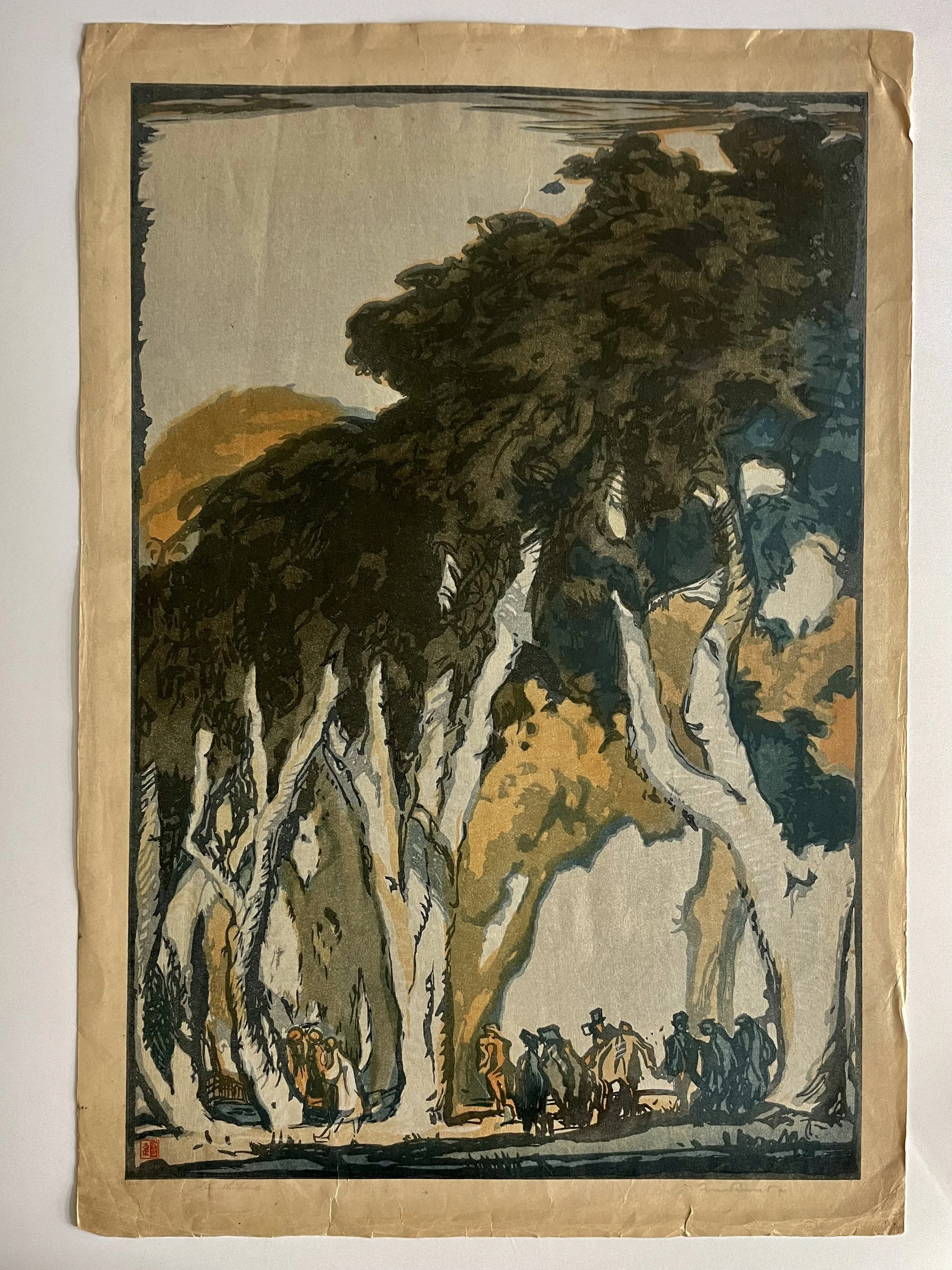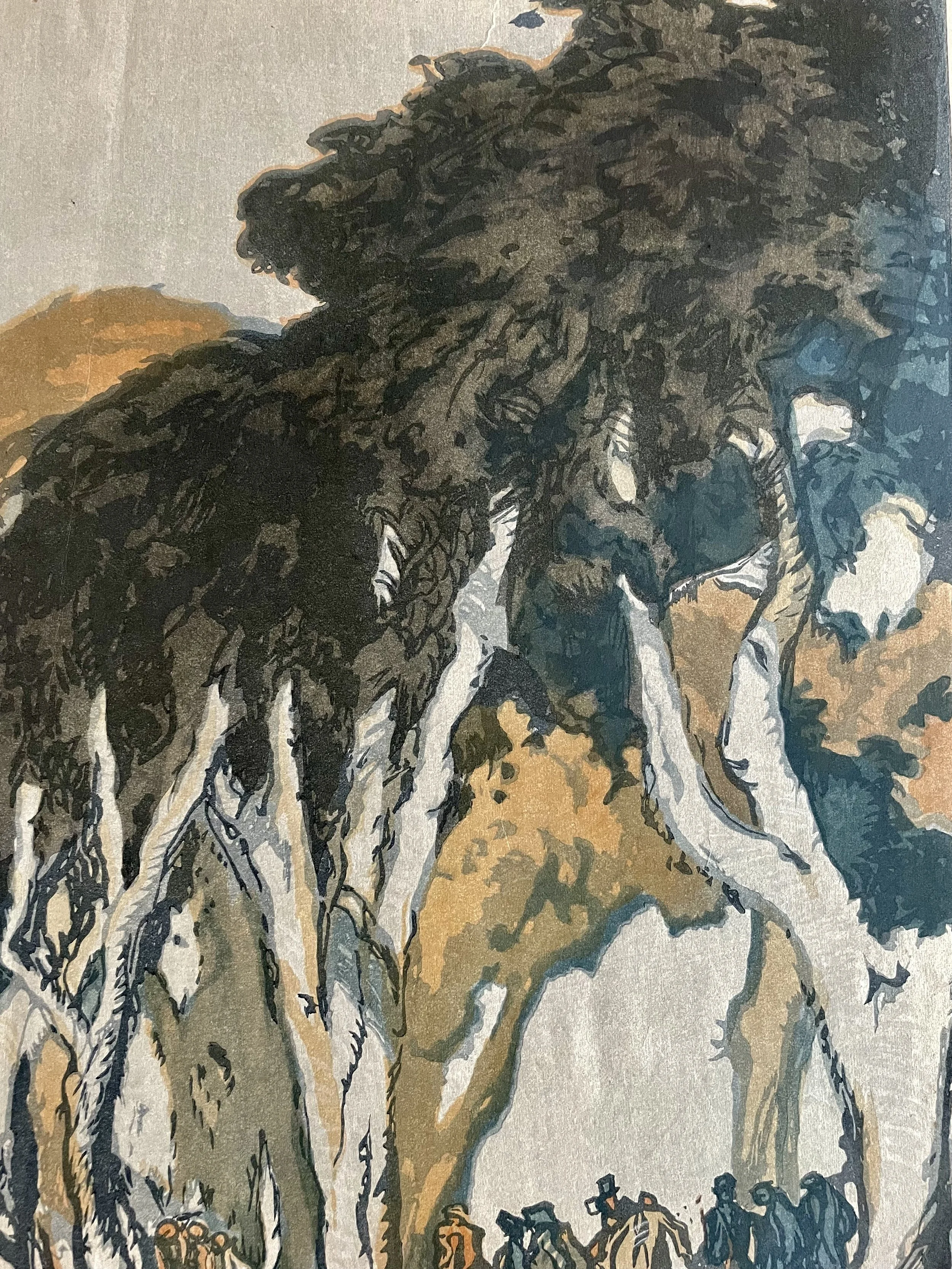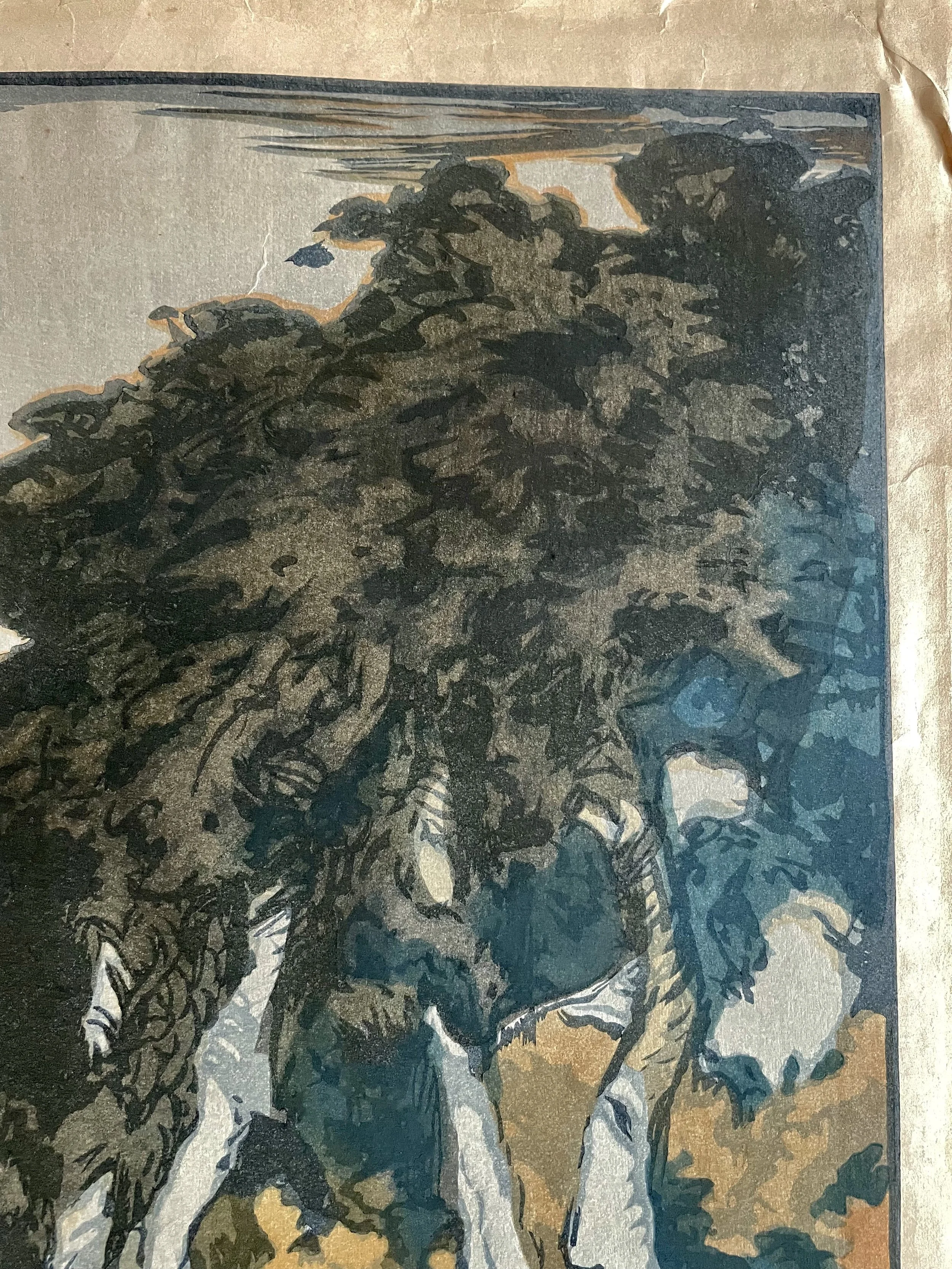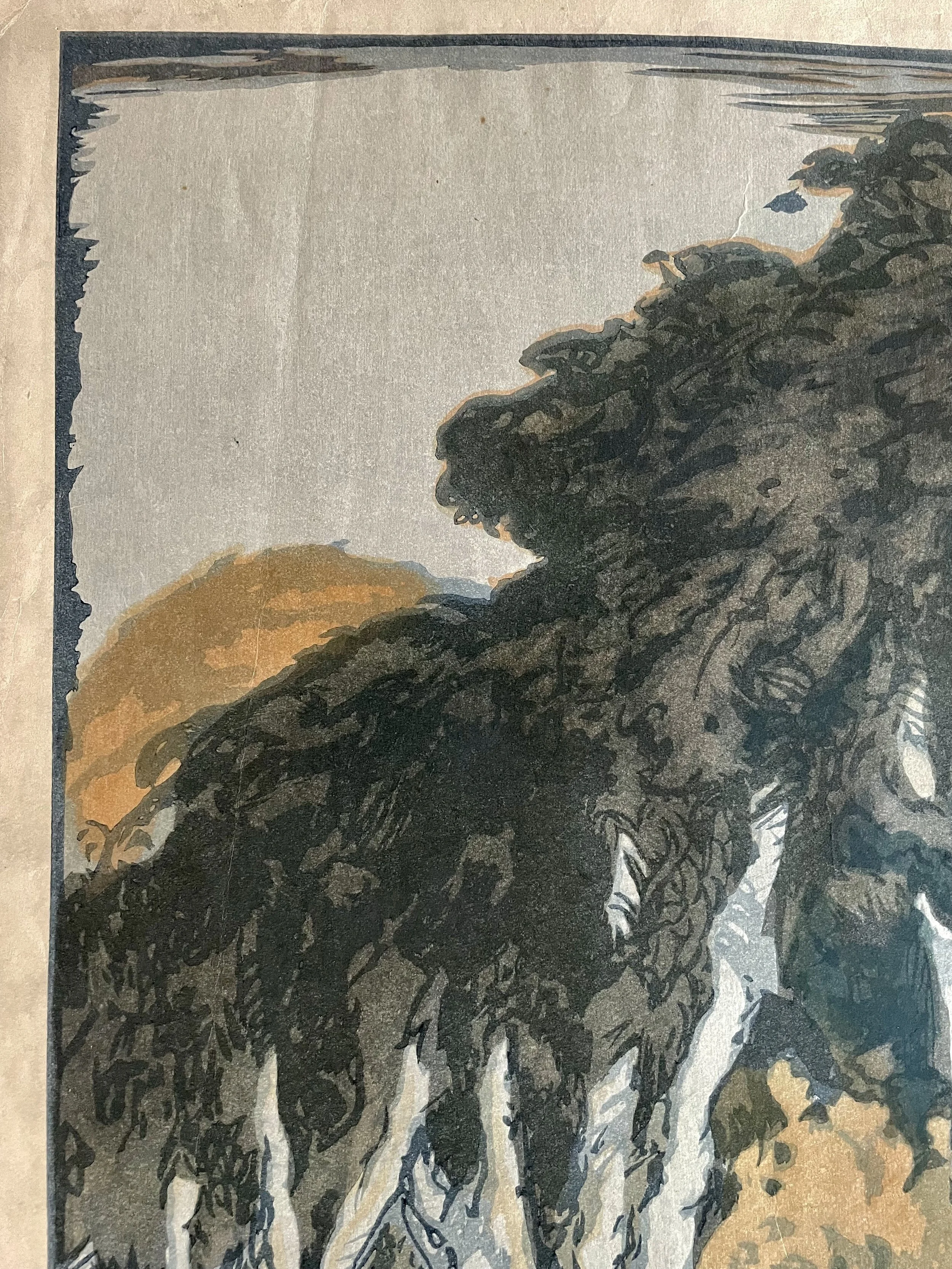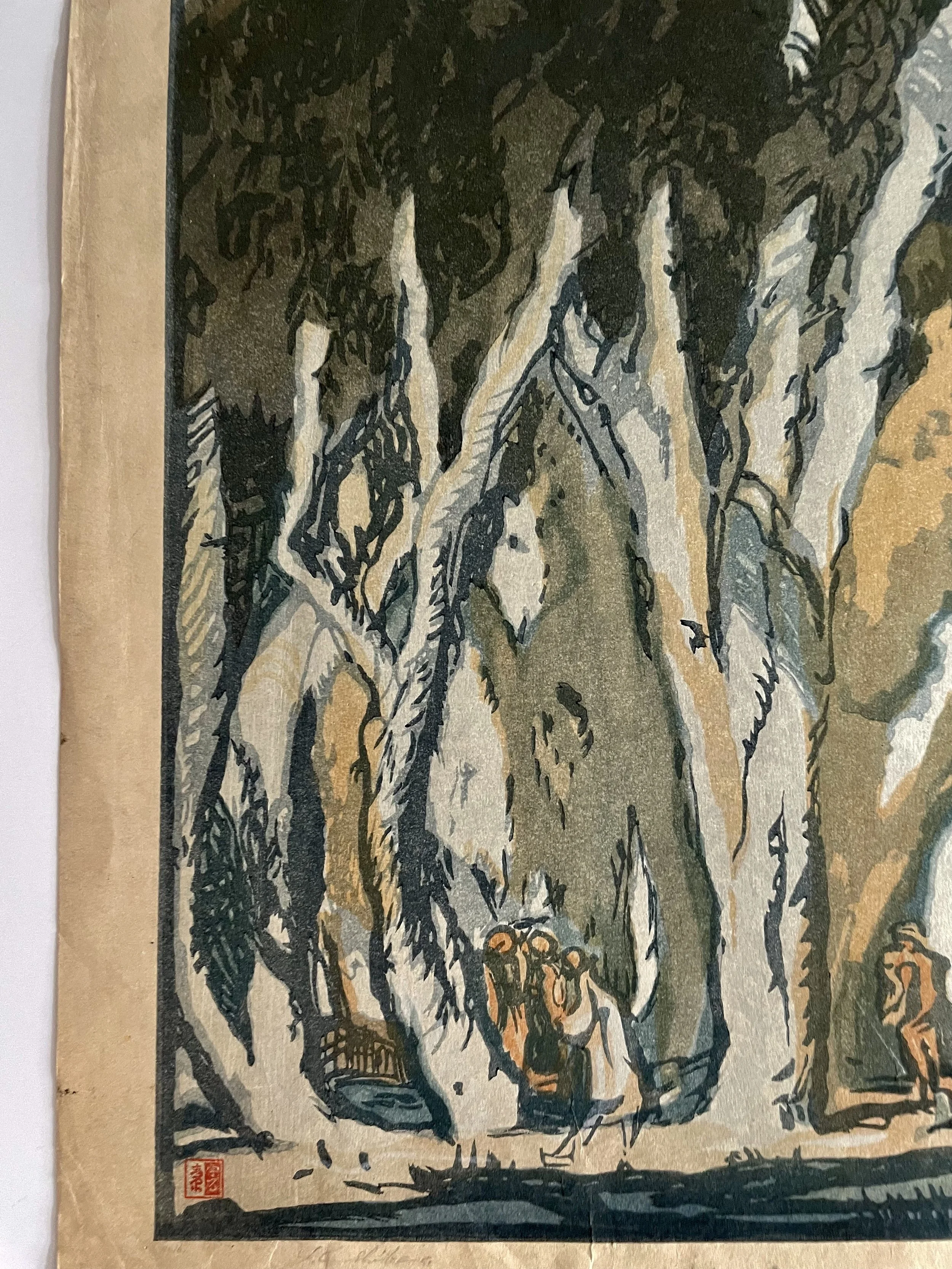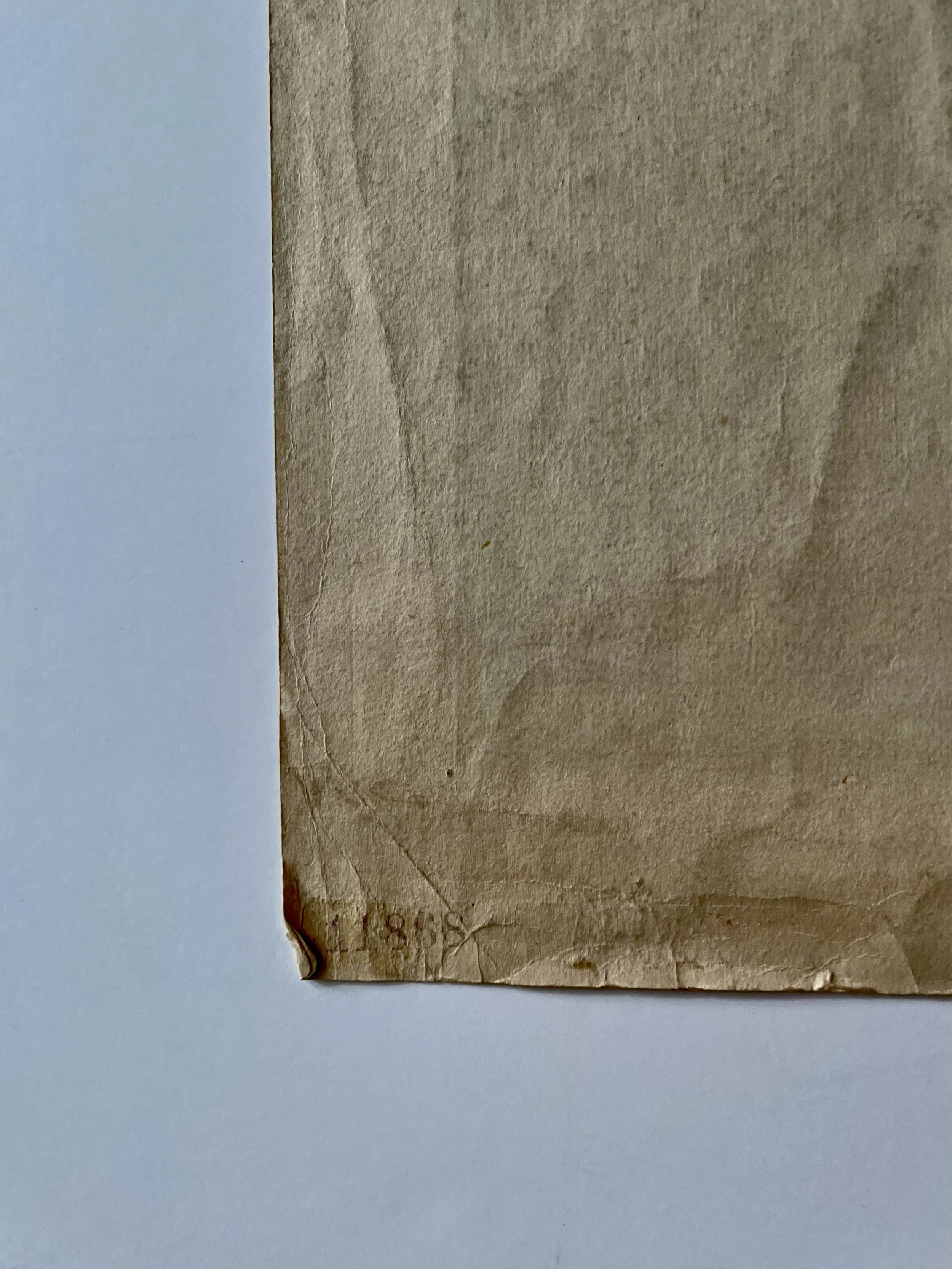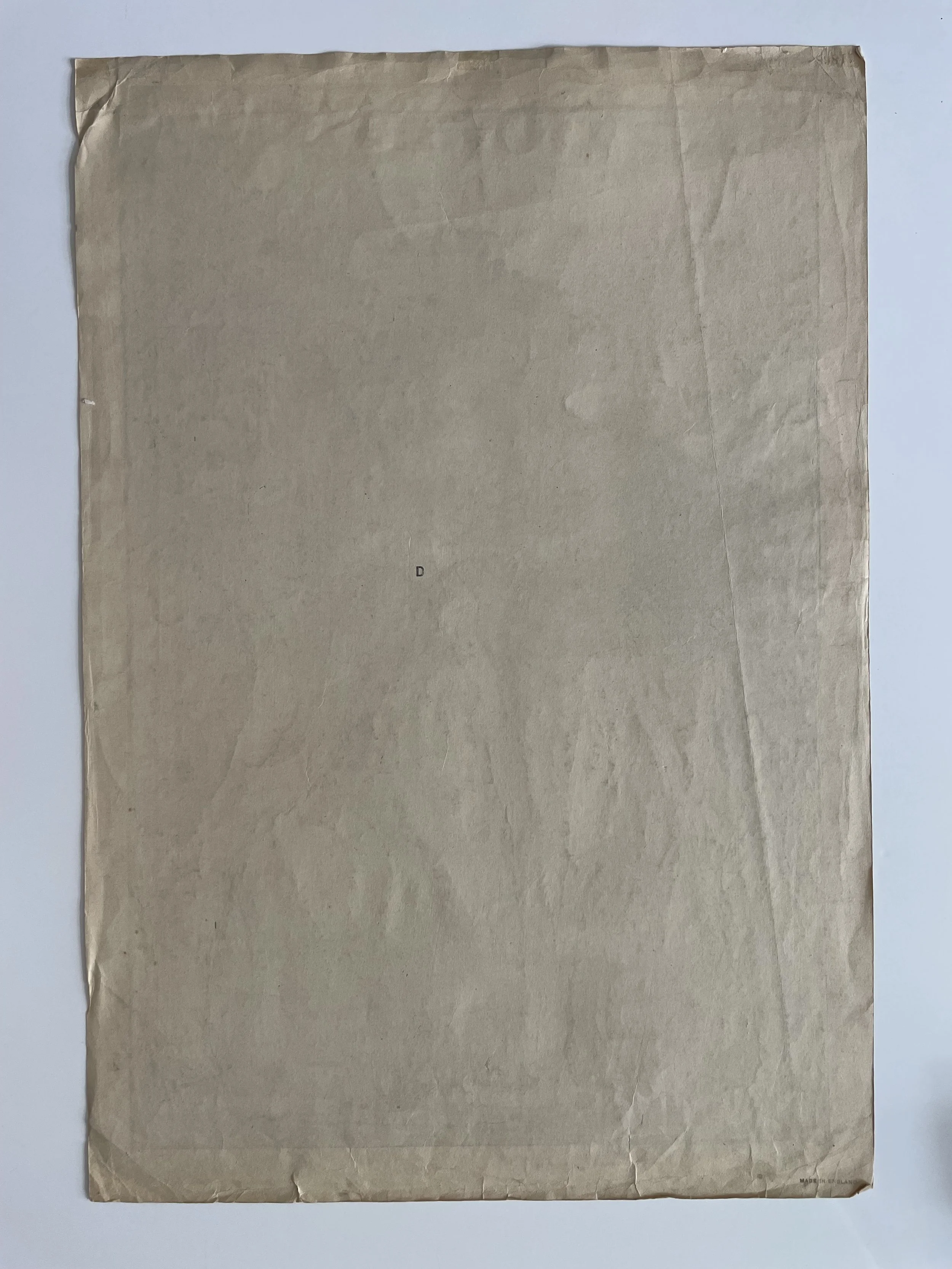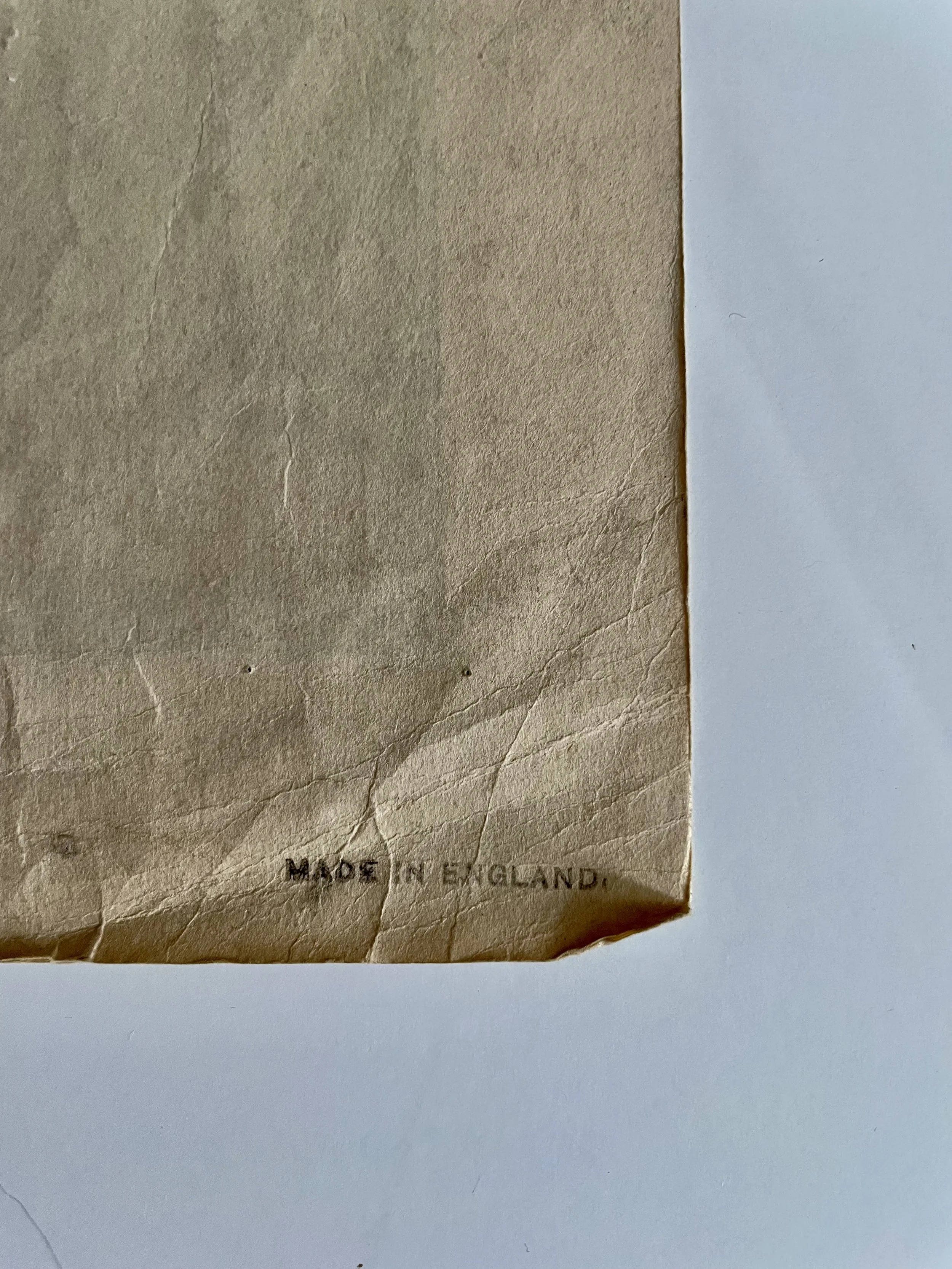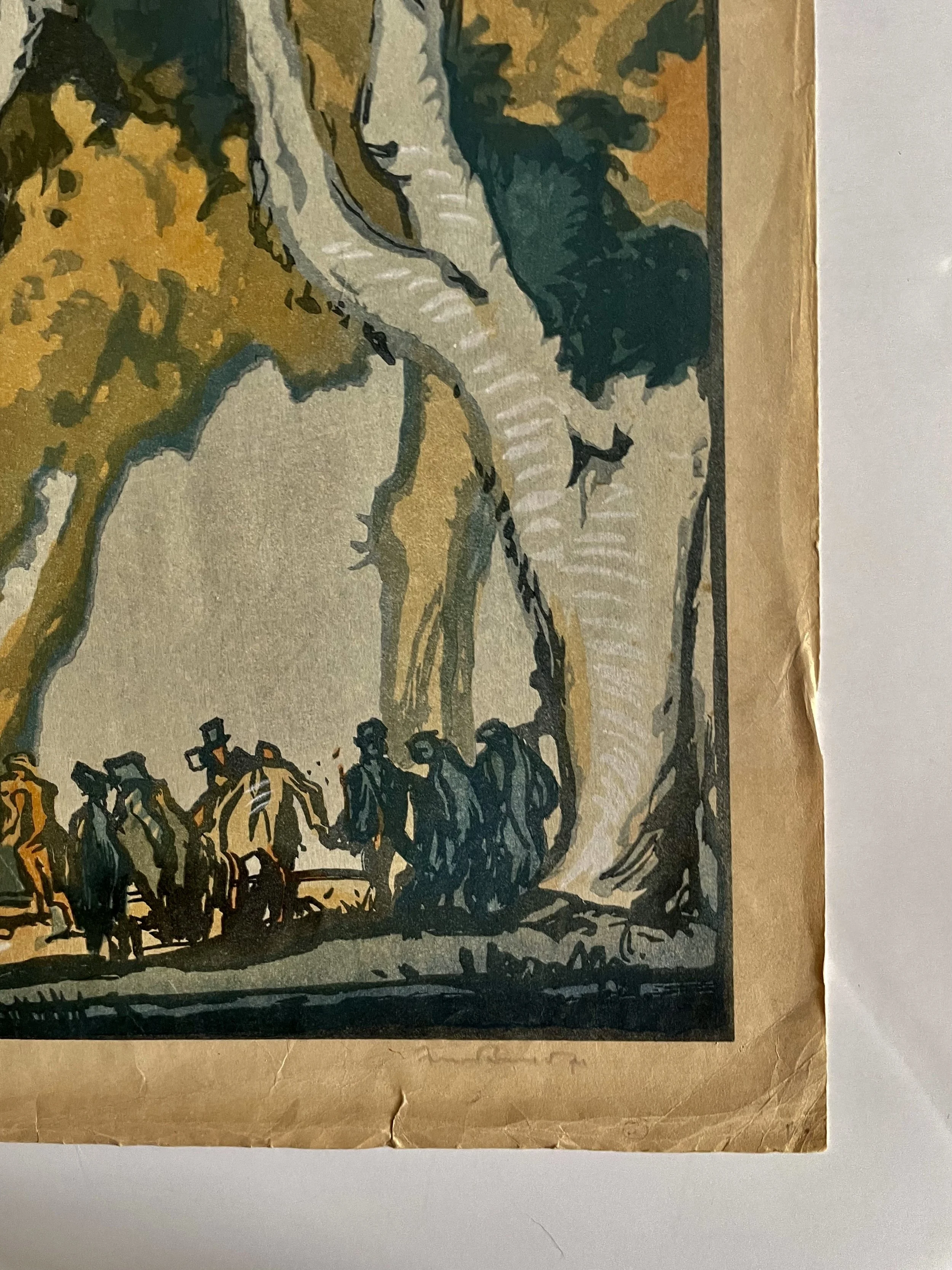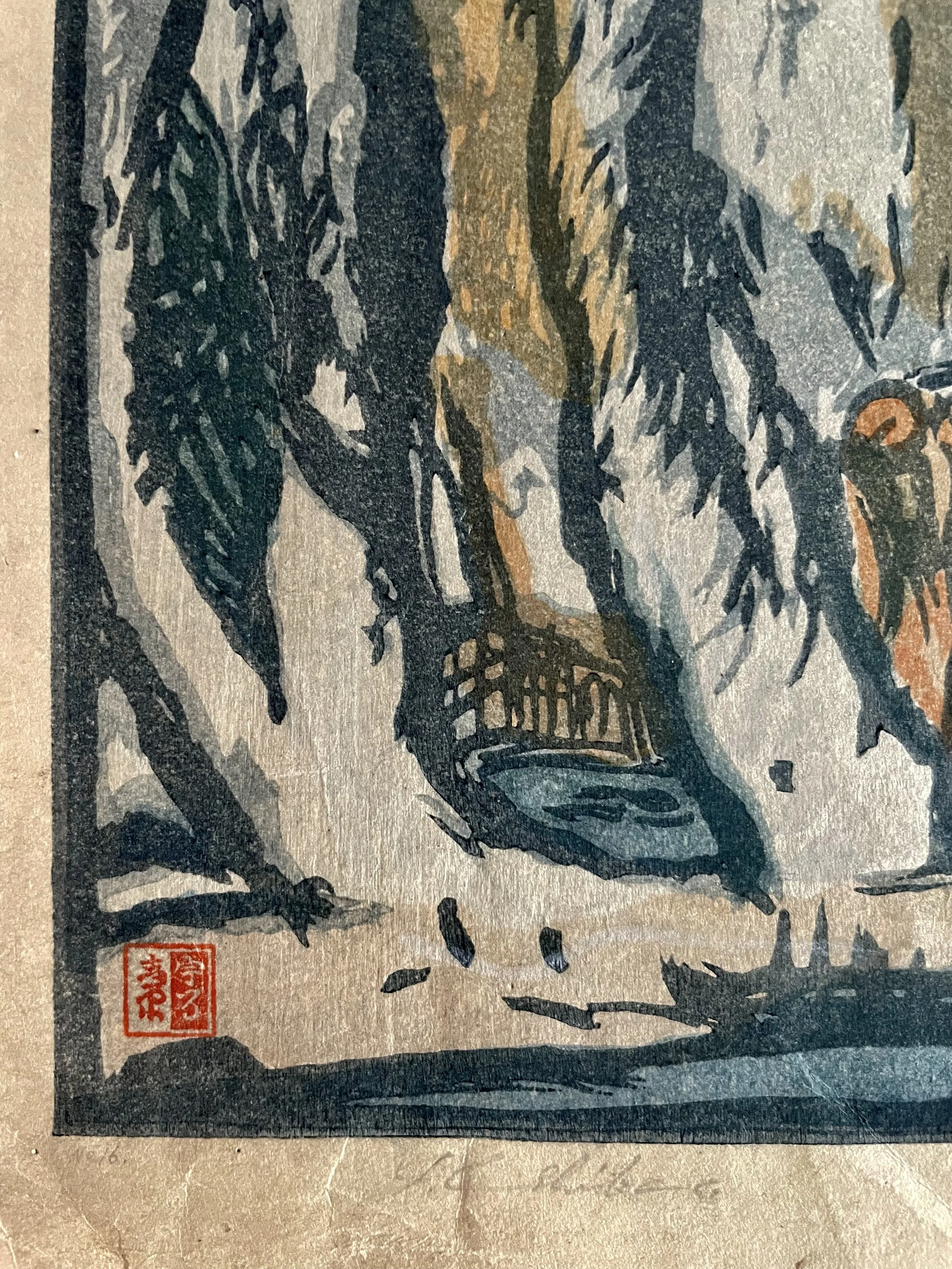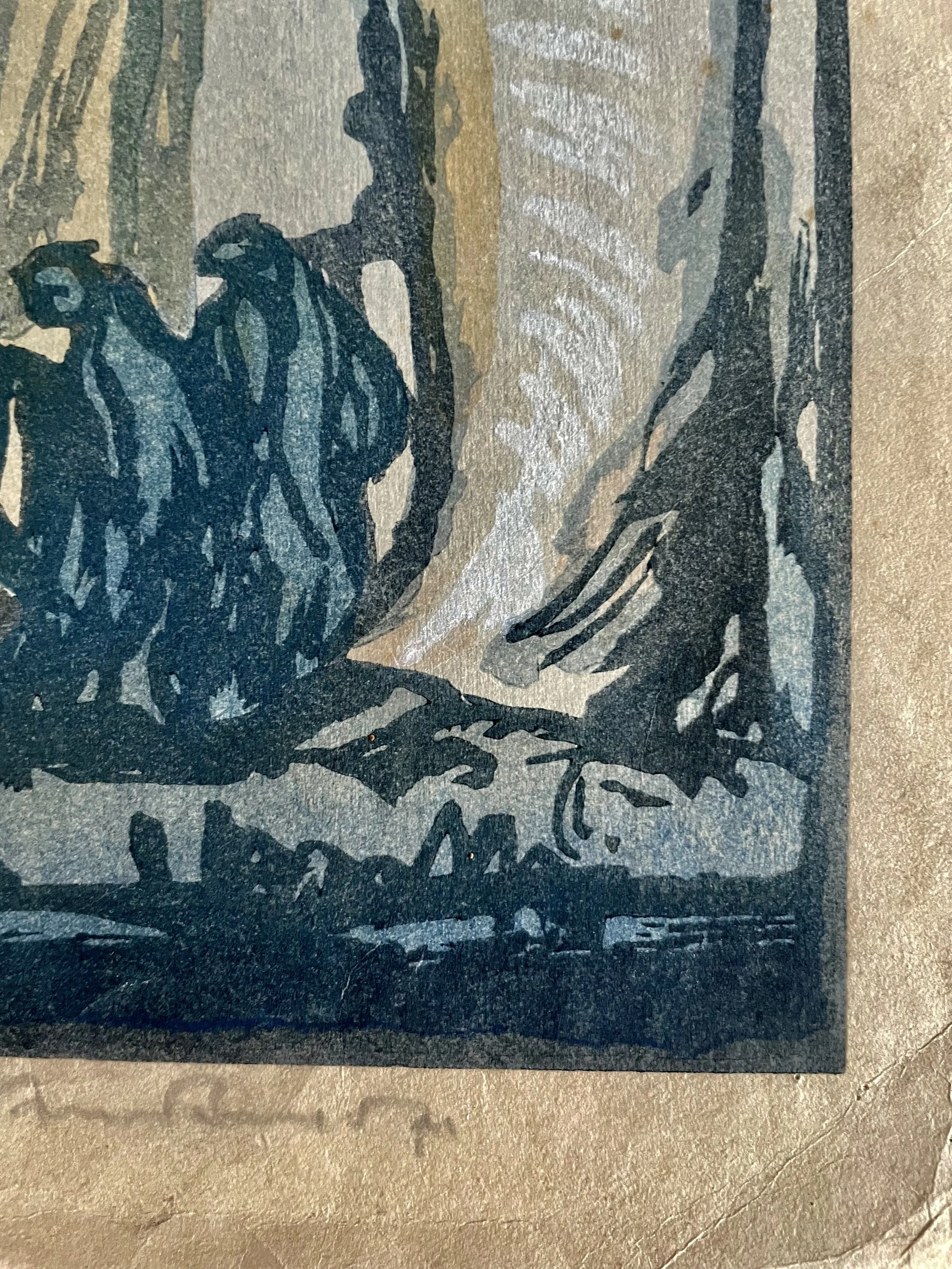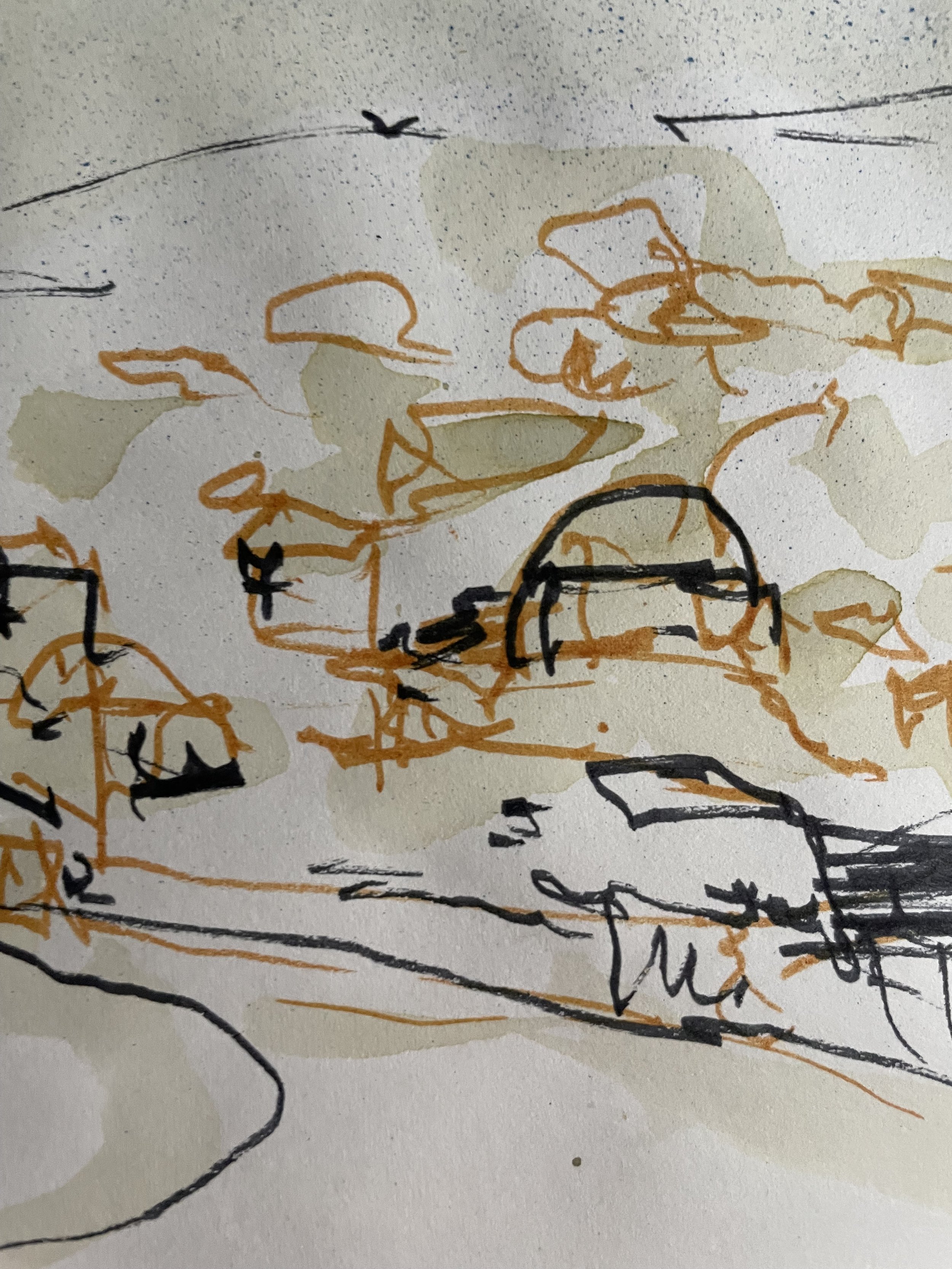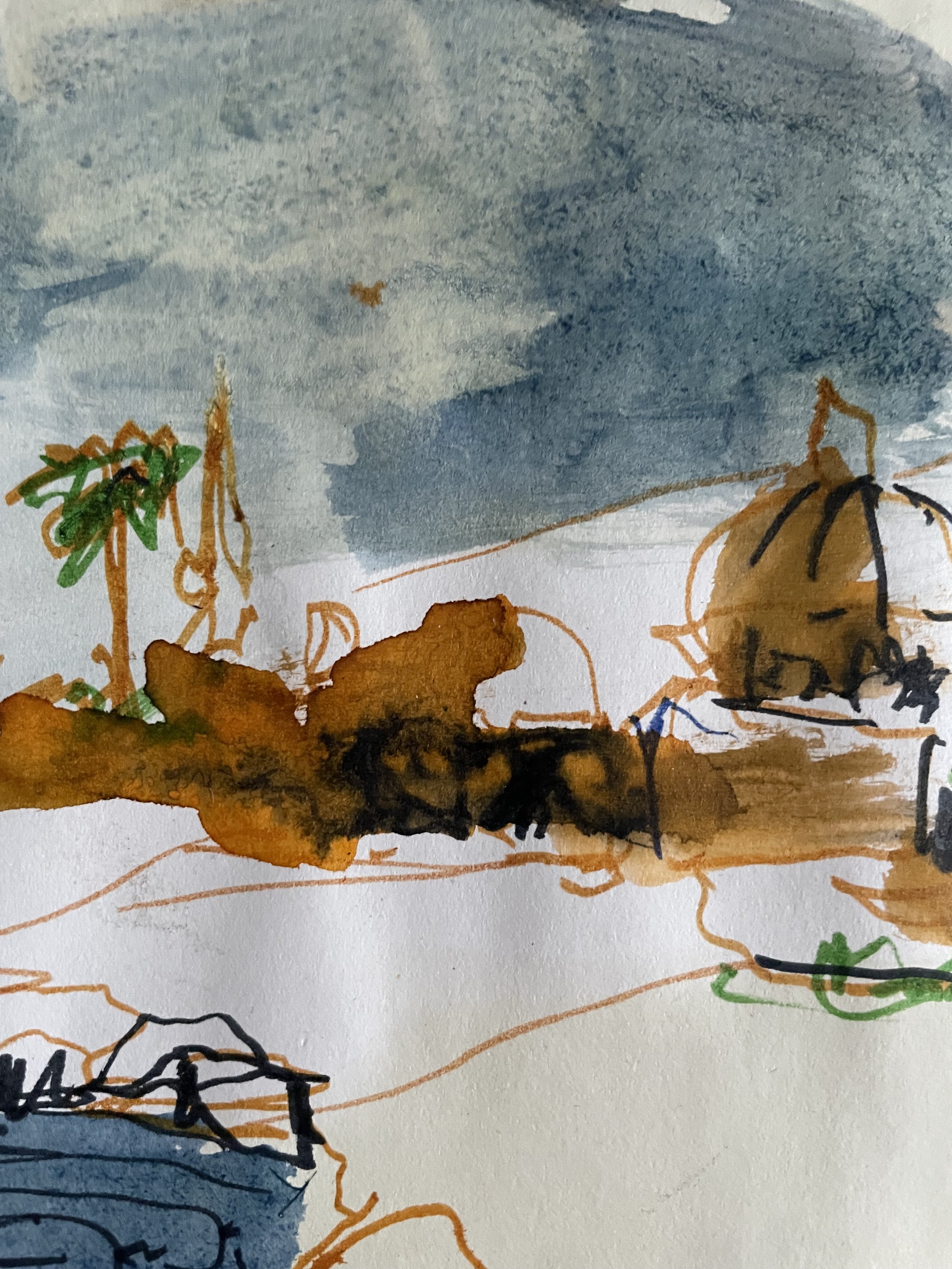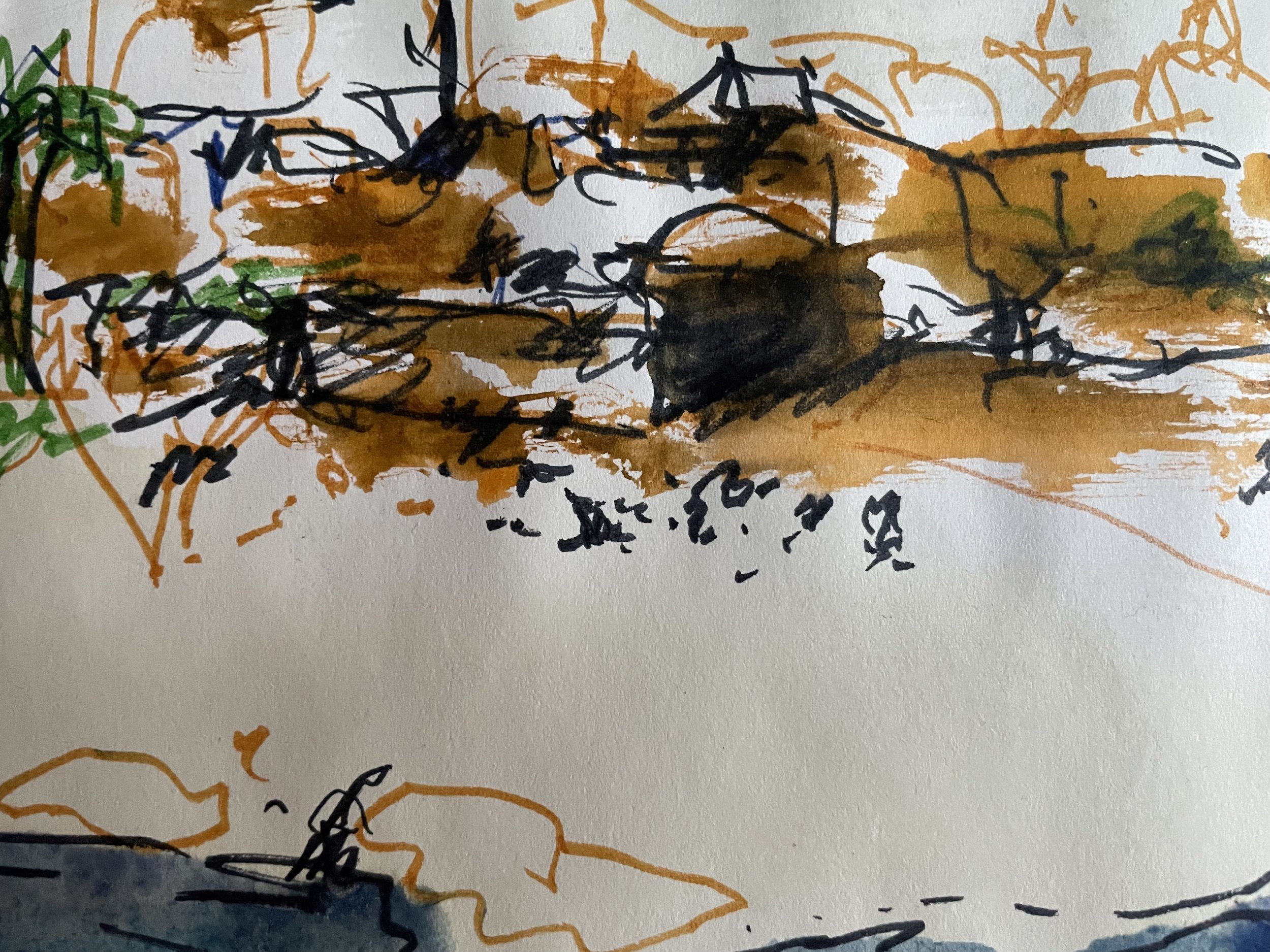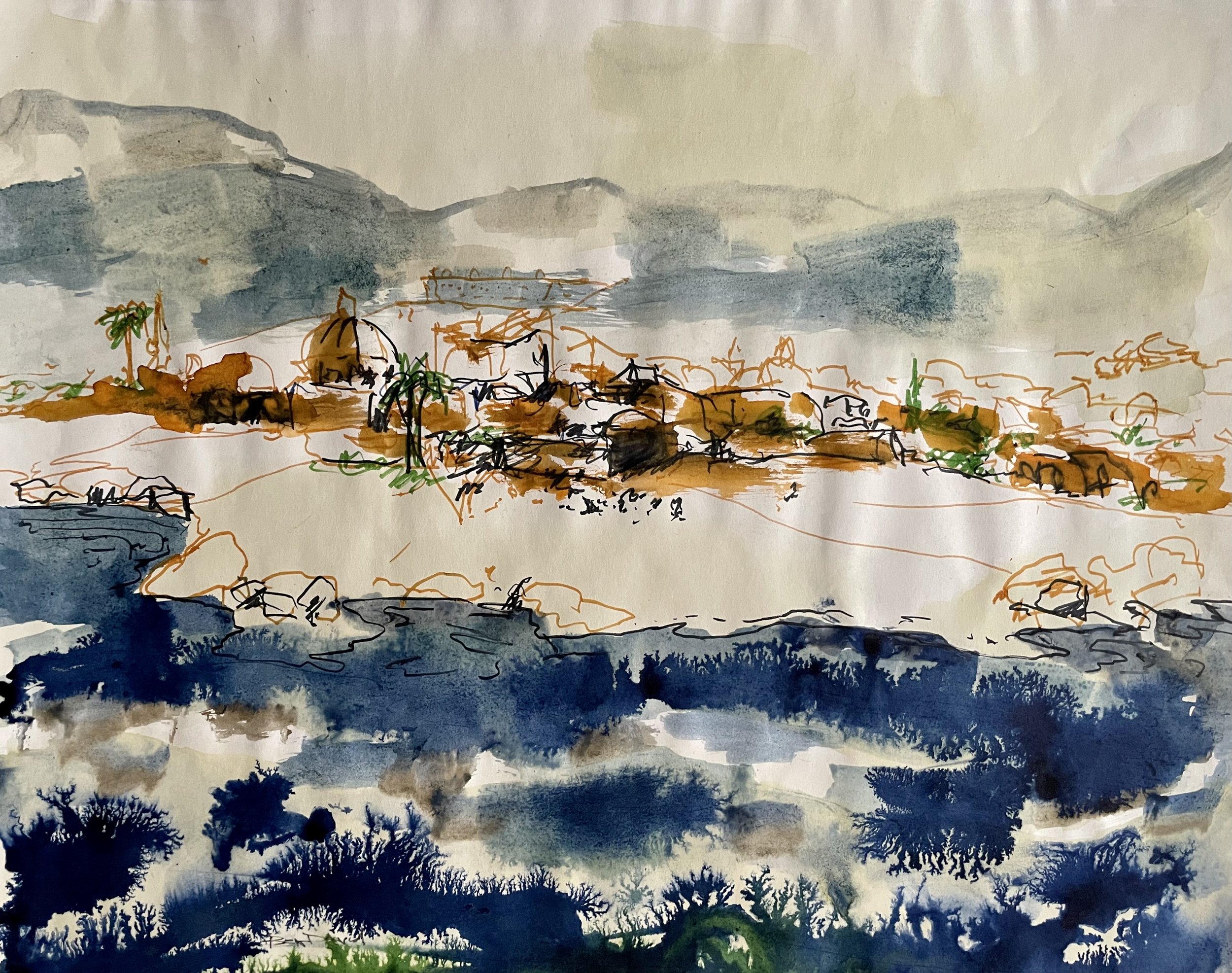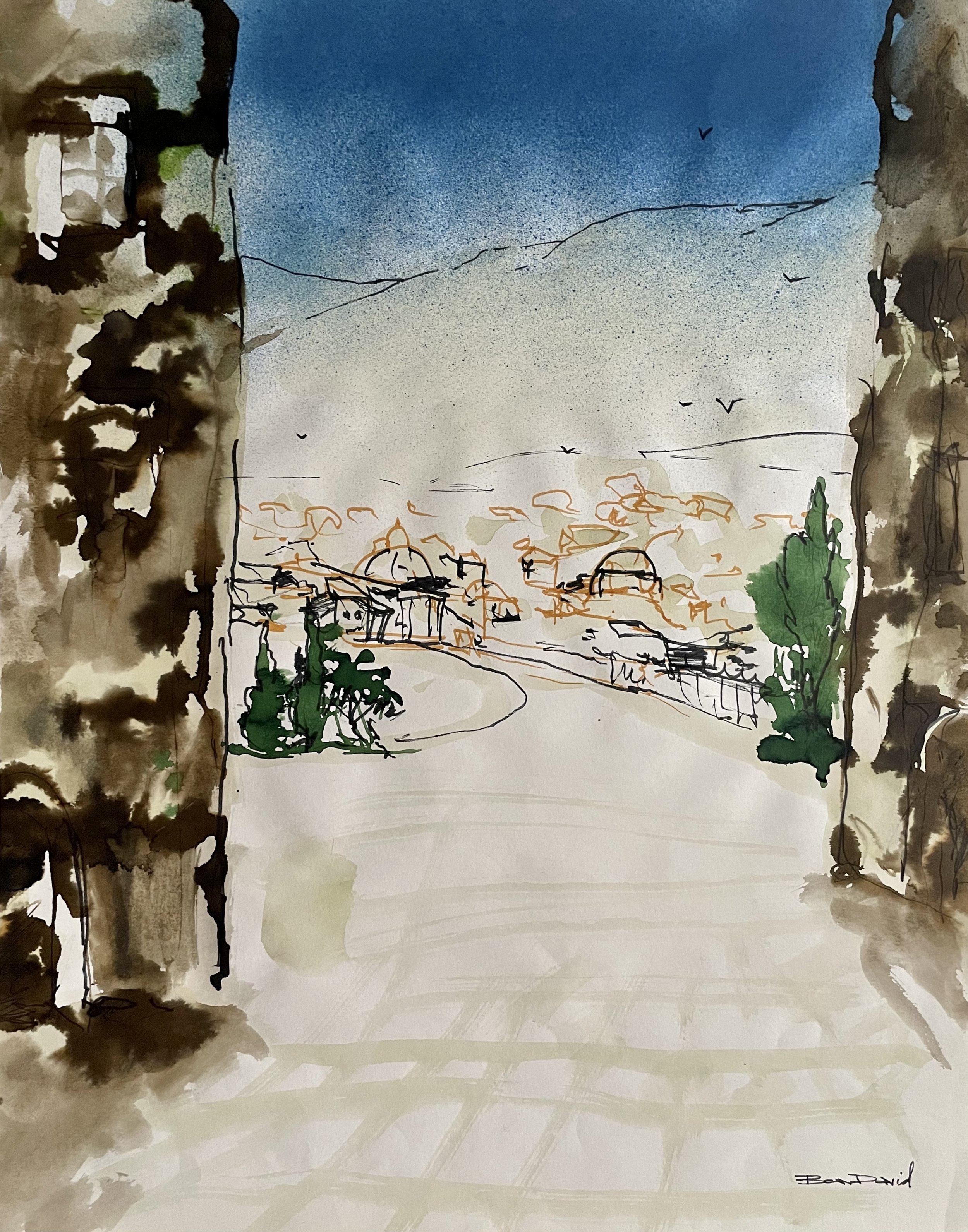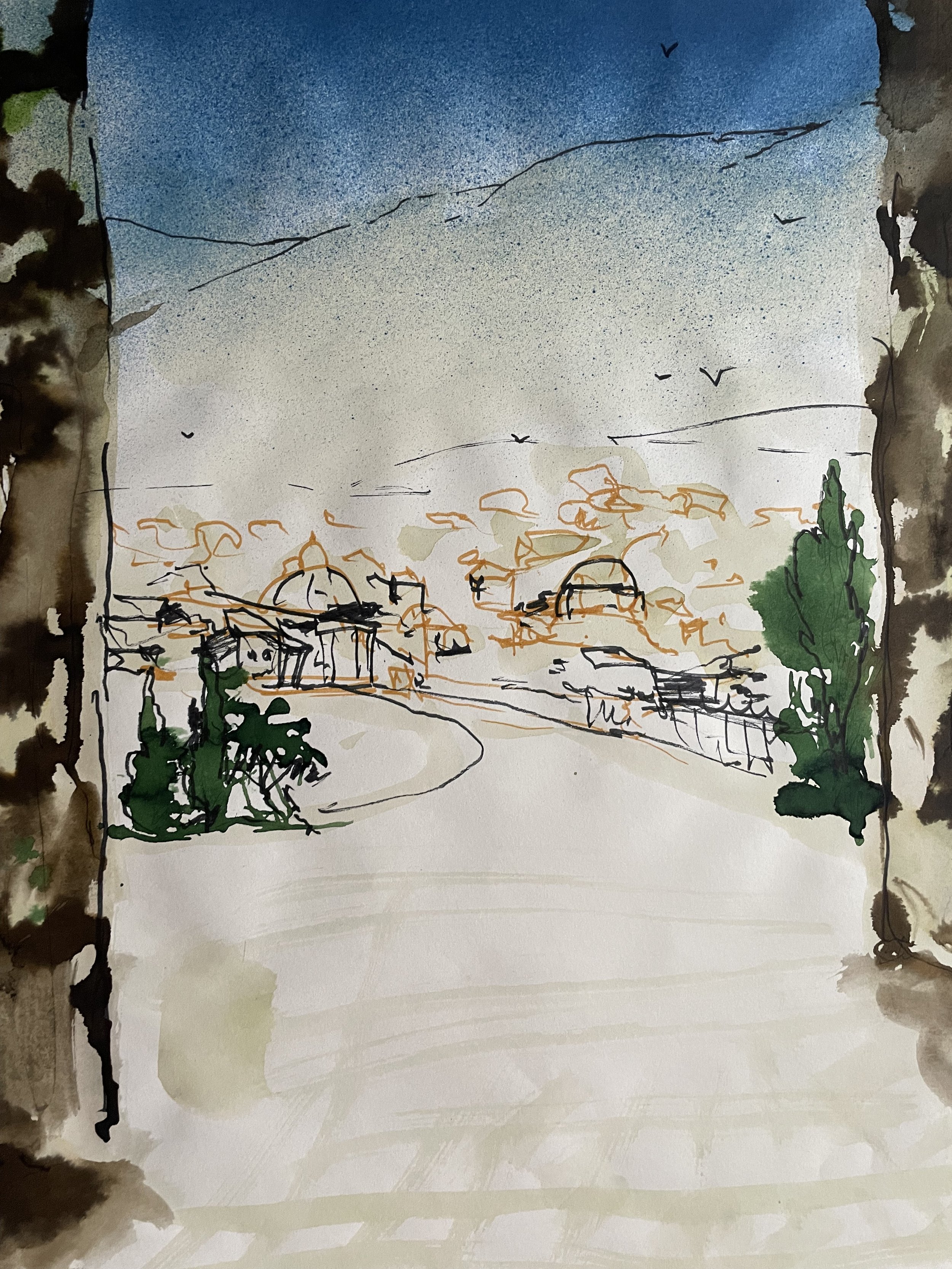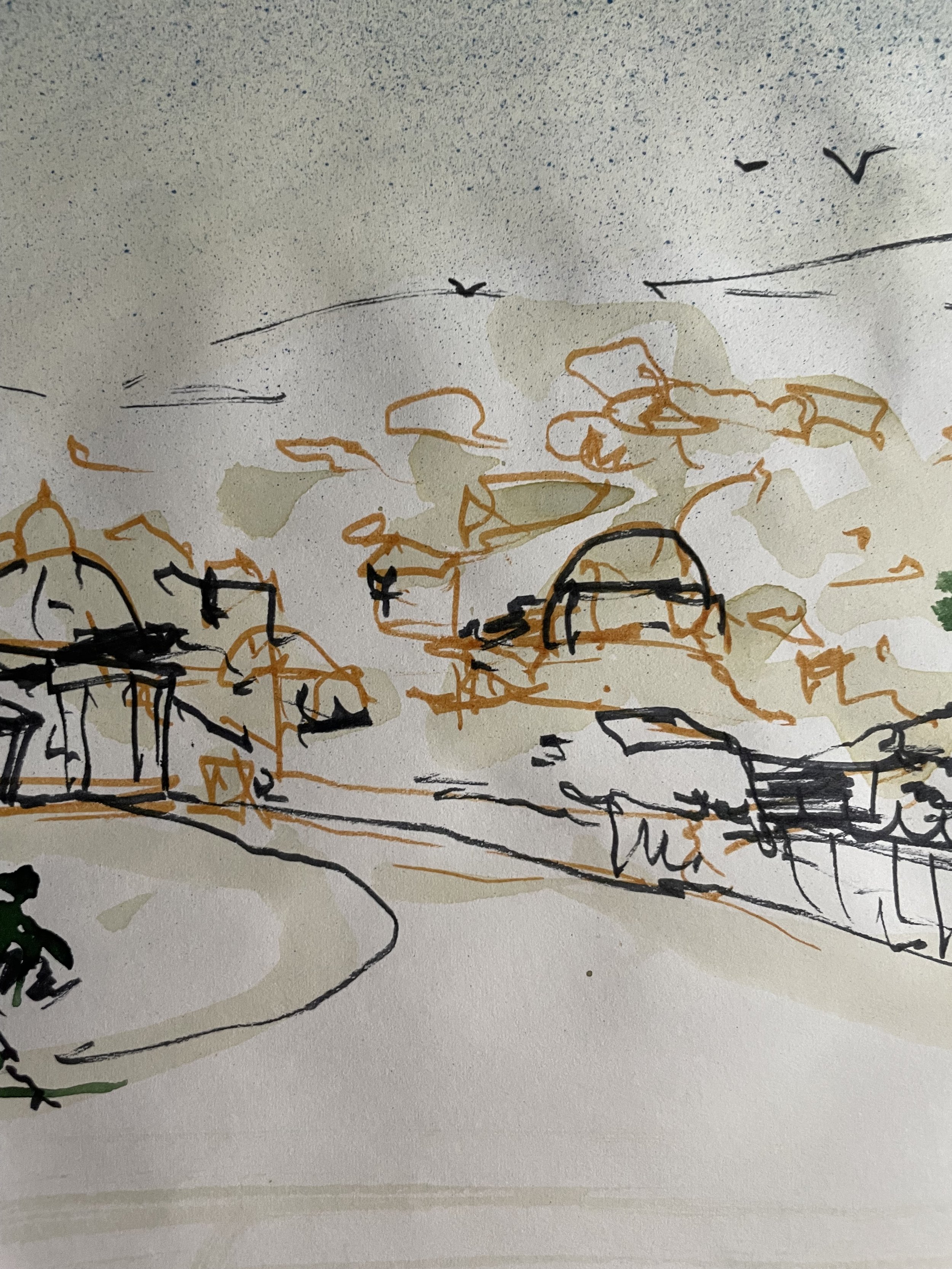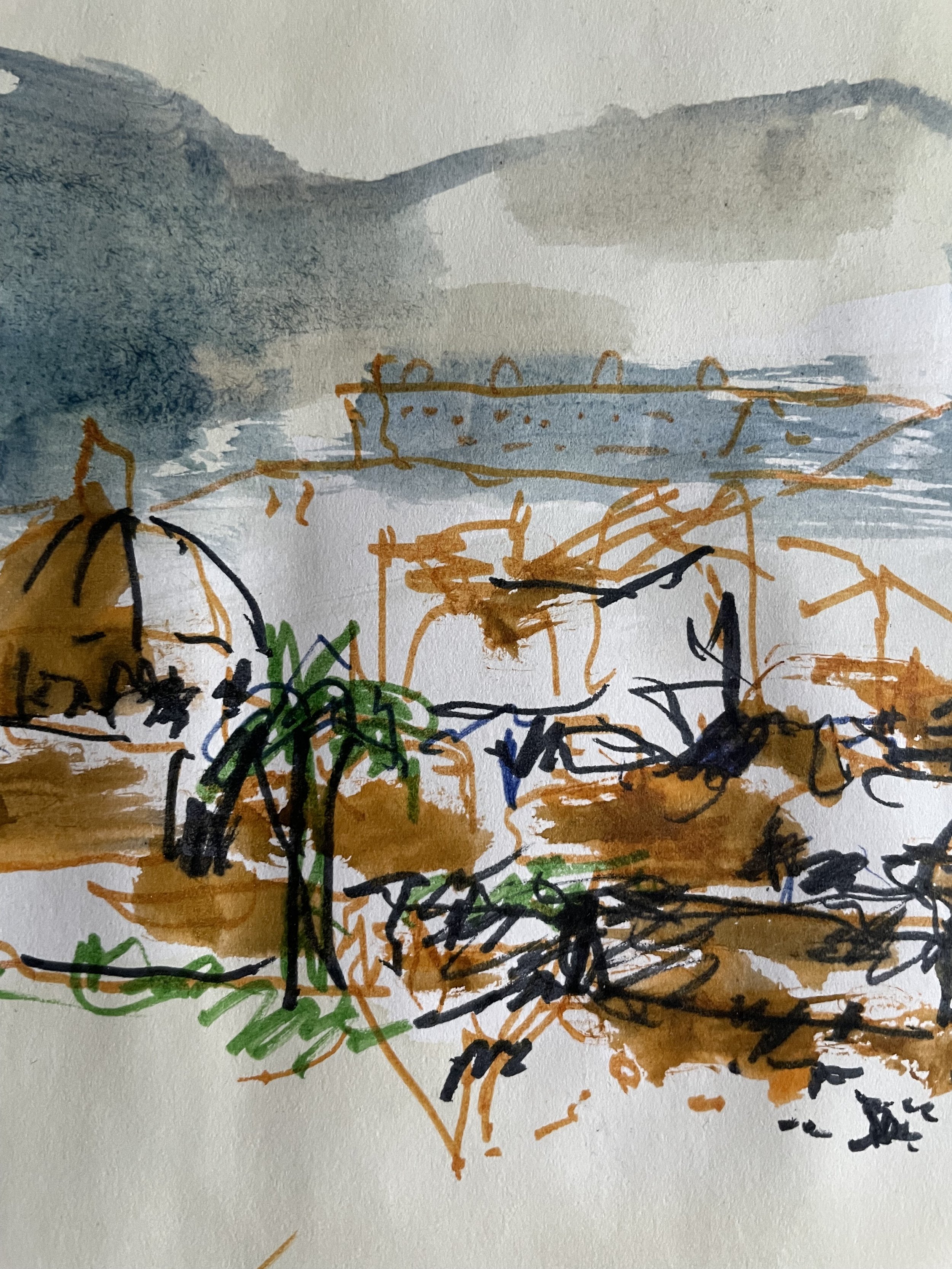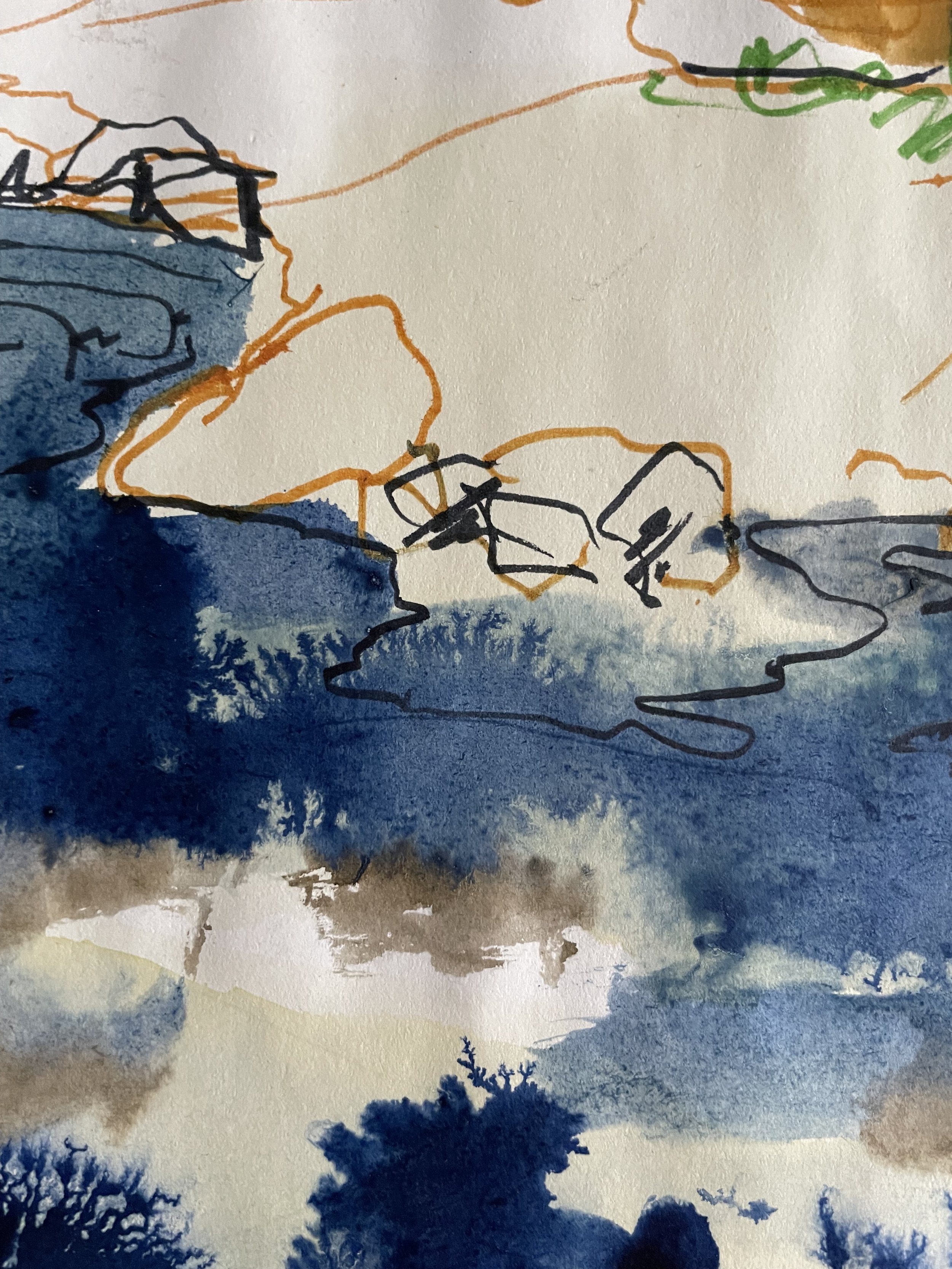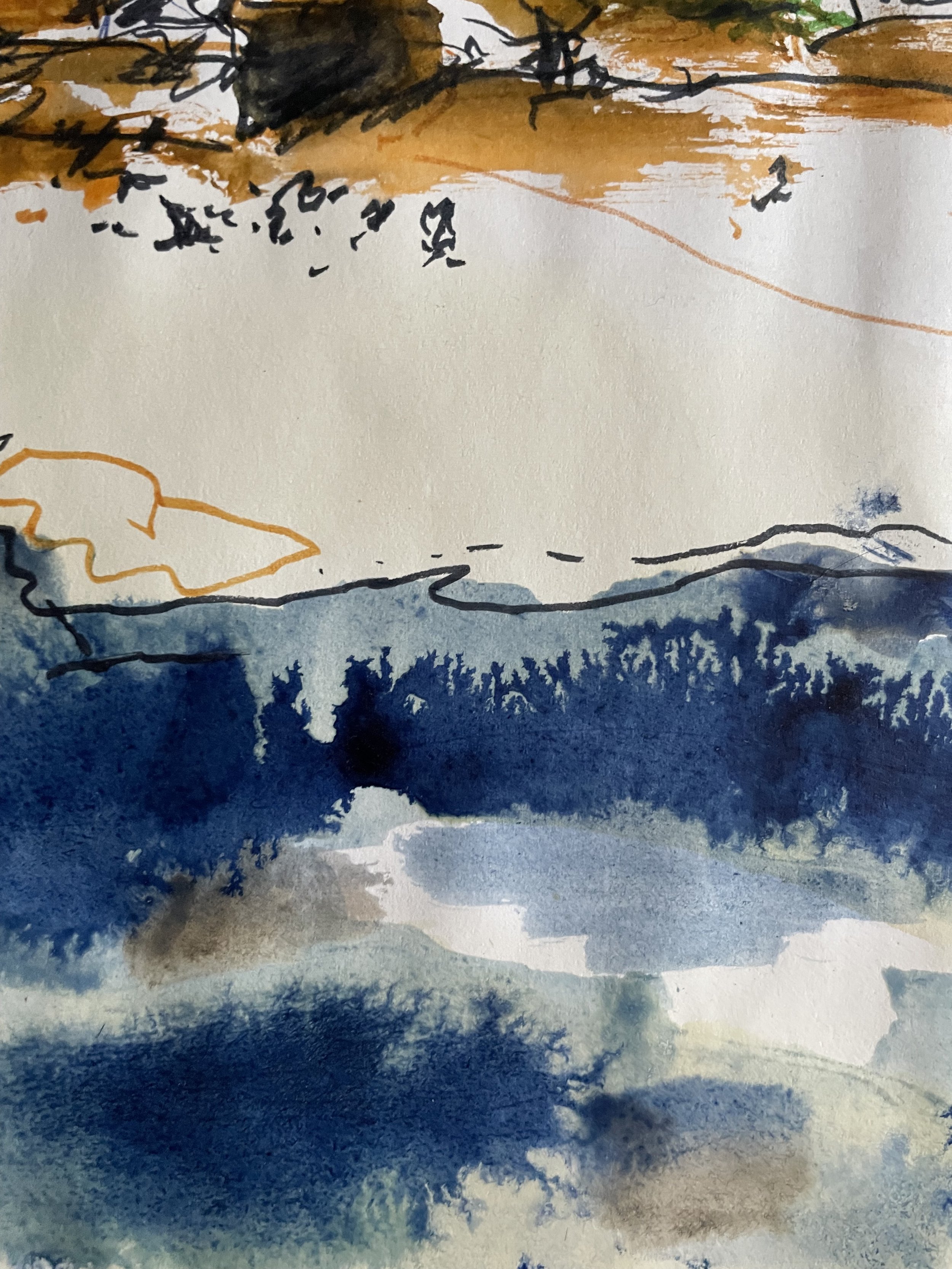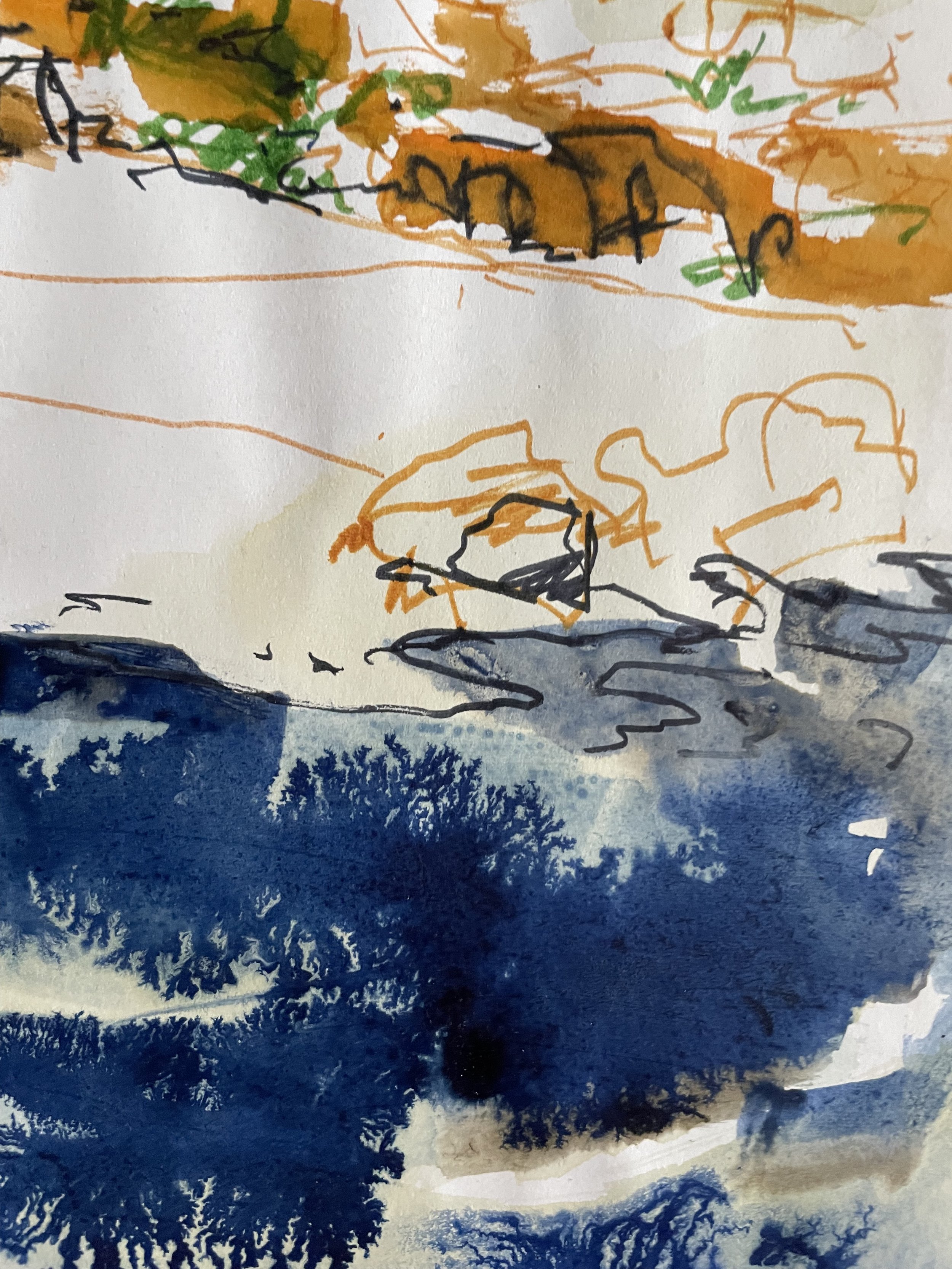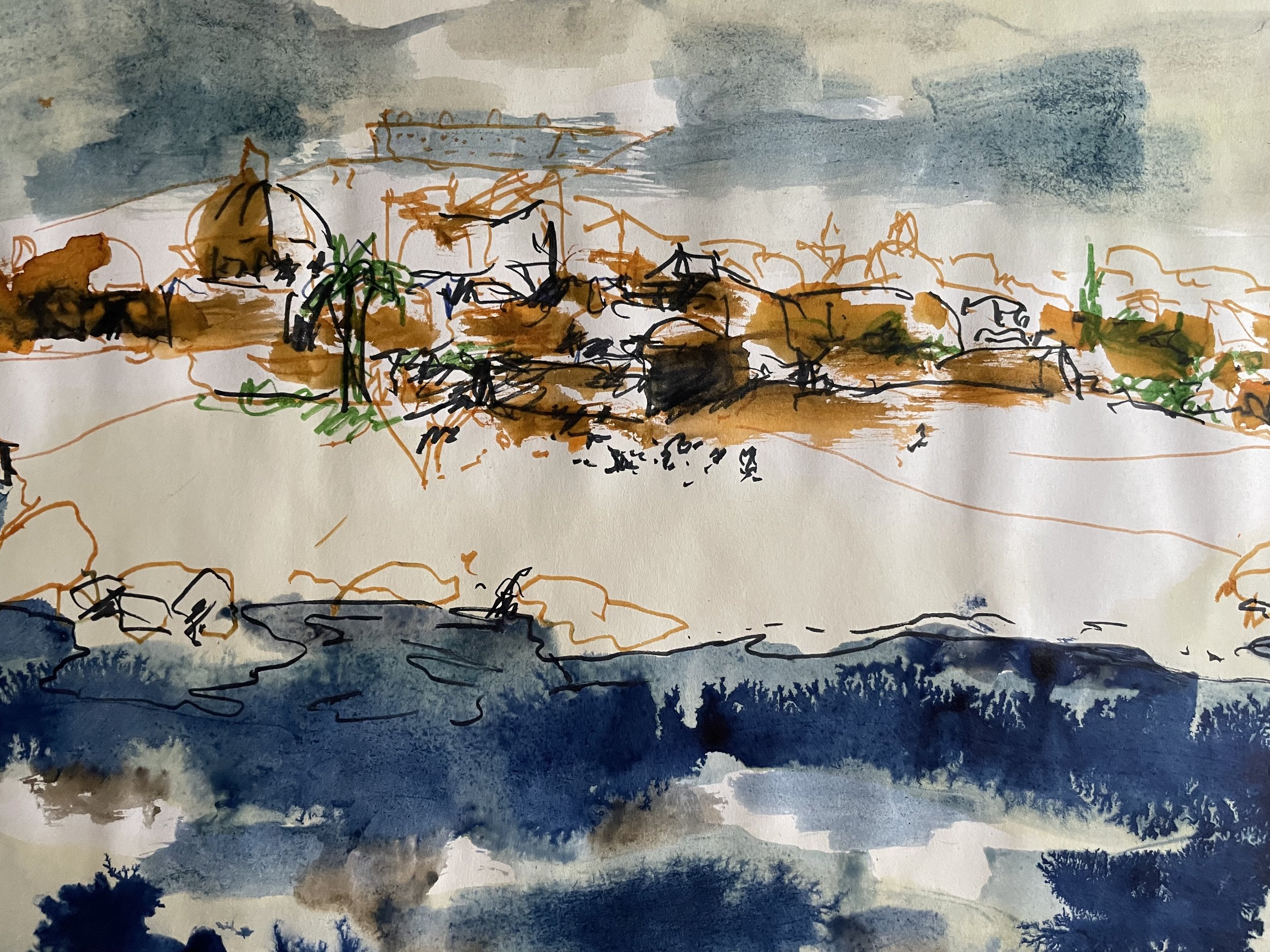 Image 1 of 7
Image 1 of 7

 Image 2 of 7
Image 2 of 7

 Image 3 of 7
Image 3 of 7

 Image 4 of 7
Image 4 of 7

 Image 5 of 7
Image 5 of 7

 Image 6 of 7
Image 6 of 7

 Image 7 of 7
Image 7 of 7








“Belvoir Castle,” Alexander Francis Lydon (1836–1917), c. 1880, Baxter-process colored woodblock engraving printed by Benjamin Fawcett (1808–1893), published by William Mackenzie, London
“Belvoir Castle,” Alexander Francis Lydon (1836–1917), c. 1880, Baxter-process colored woodblock engraving printed by Benjamin Fawcett (1808–1893), published by William Mackenzie, London; sheet 10½ × 8 in., image approx. 7¼ × 5⅛ in., unsigned as issued.
This exquisite Victorian Baxter-process colored woodblock engraving of Belvoir Castle, illustrated by Alexander Francis Lydon and printed by master color-printer Benjamin Fawcett, comes from the celebrated 1880 publication A Series of Picturesque Views of Seats of the Noblemen and Gentlemen of Great Britain and Ireland. Produced using an average of eight transparent color blocks, this plate captures the romantic silhouette of Belvoir Castle rising above wooded hills, making it a highly collectible example of 19th-century British landscape illustration, aristocratic architecture, and historic color printing.
Artwork Description
This beautifully preserved woodblock engraving presents a dramatic landscape view of Belvoir Castle, ancestral seat of the Dukes of Rutland, situated atop a commanding ridge overlooking rolling woodland in Leicestershire. Alexander Francis Lydon renders the castle in luminous detail—its crenellated towers, Gothic Revival windows, and fortified elevation rising above dense trees that fill the foreground.
The composition emphasizes harmony between human craftsmanship and natural beauty: sheep graze in the lower meadow, figures stroll along a winding path, and sunlight breaks softly across the layered woodland, giving the castle a majestic, almost theatrical presence.
Printed using the Baxter-process, Benjamin Fawcett’s signature technique, the image was produced from multiple carefully registered woodblocks (commonly eight or more), each inked in transparent tones. This results in exceptionally rich color layering while preserving Lydon’s precise architectural draftsmanship. The transparency and subtle blending of hues—greens, golds, earth tones, and atmospheric grays—reflect the high artistry for which the Lydon–Fawcett partnership is known.
This plate is from the important late-Victorian volume A Series of Picturesque Views of Seats of the Noblemen and Gentlemen of Great Britain and Ireland, a monumental visual survey of estates across the United Kingdom. Many of the structures represented have since been altered or lost, making these prints invaluable as both artistic works and historical documents.
Artist & Printer Biographies
ALEXANDER FRANCIS LYDON (1836–1917) — Illustrator
Lydon was a distinguished British artist and draughtsman whose finely detailed illustrations grace some of the most important Victorian natural history and topographical publications. Trained in the workshop of printer Benjamin Fawcett, Lydon mastered architectural rendering, landscape drawing, and the unique demands of woodblock-based color printing.
He collaborated extensively with clergyman and naturalist Rev. Francis Orpen Morris, contributing to a decades-long sequence of ornithological books, landscape volumes, and country-house surveys. Lydon’s illustrations are admired for their clarity, composition, and ability to balance technical accuracy with poetic atmosphere.
BENJAMIN FAWCETT (1808–1893) — Printer
Benjamin Fawcett was one of the Victorian era’s greatest color printers, pioneering adaptations of the Baxter process for large-scale book illustration. Operating from Driffield, Yorkshire, Fawcett trained and collaborated with gifted draughtsmen such as Lydon, producing color woodblock prints remarkable for their transparency, registration precision, and subtle tonal harmonies.
His contribution to British color printing greatly influenced the development of 19th-century illustrated books.
WILLIAM MACKENZIE — Publisher
Based in London, Edinburgh, and Dublin, William Mackenzie was one of the premier publishers of deluxe illustrated volumes during the late 19th century. His edition of A Series of Picturesque Views of Seats of the Noblemen and Gentlemen of Great Britain and Ireland remains a treasured record of the architecture, design, and landscapes of major British estates.
Alexander Francis Lydon (illustrator), Benjamin Fawcett (printer), “Belvoir Castle,” c. 1880. Baxter-process colored woodblock engraving from Picturesque Views of Seats of the Noblemen and Gentlemen of Great Britain and Ireland, published by William Mackenzie. Image 7¼ × 5⅛ in., sheet 10½ × 8 in. Excellent color; very good vintage condition.
CERTIFICATE OF VALUE & AUTHENTICATION
For Fine Art Appraisal / Insurance / Gallery Documentation
Title: Belvoir Castle
Illustrator: Alexander Francis Lydon (1836–1917)
Printer: Benjamin Fawcett (1808–1893)
Publisher: William Mackenzie, London / Edinburgh / Dublin
Date: c. 1880
Medium: Baxter-process colored woodblock engraving (multi-block, avg. 8 colors)
Sheet Size: 10½ × 8 inches
Image Size: approx. 7¼ × 5⅛ inches
Condition: Very good to excellent; strong original color; clean margins; never framed or displayed
Current Owner: Artfind Gallery, Washington, DC
Authentication: Verified period production consistent with known Lydon–Fawcett collaboration and Mackenzie publication standards.
8. Provenance Chain (Collector Format)
Published by William Mackenzie, London / Edinburgh / Dublin (c. 1880)
Private British Collection
Mitch Moore Gallery Inc., NYC (retired collection)
Current Owner: Artfind Gallery, Washington, DC
✅ 10. SEO Title (100 characters max)
Belvoir Castle – 1880 Baxter-Process Woodblock Engraving by Lydon & Fawcett | Antique British Print
✅ SEO Description (400 characters max)
Victorian Baxter-process colored woodblock engraving of Belvoir Castle by Alexander Francis Lydon and Benjamin Fawcett, published c.1880 by William Mackenzie. Featuring rich original color and atmospheric landscape detail, this is a highly collectible example of 19th-century British country-house illustration.
Historical Note
Belvoir Castle’s name derives from the Norman French beau voir, meaning “beautiful view.” It has been the home of the Manners family, Dukes of Rutland, since the 16th century. The castle depicted here is Wyatt’s reconstruction (1801–1832), built after the earlier house was destroyed by fire. By the time Lydon and Fawcett produced this print, Belvoir stood as a symbol of Victorian nobility’s enduring grandeur, its sweeping parklands and crenellated towers perfectly suited to the romantic tastes of the age.
“Belvoir Castle,” Alexander Francis Lydon (1836–1917), c. 1880, Baxter-process colored woodblock engraving printed by Benjamin Fawcett (1808–1893), published by William Mackenzie, London; sheet 10½ × 8 in., image approx. 7¼ × 5⅛ in., unsigned as issued.
This exquisite Victorian Baxter-process colored woodblock engraving of Belvoir Castle, illustrated by Alexander Francis Lydon and printed by master color-printer Benjamin Fawcett, comes from the celebrated 1880 publication A Series of Picturesque Views of Seats of the Noblemen and Gentlemen of Great Britain and Ireland. Produced using an average of eight transparent color blocks, this plate captures the romantic silhouette of Belvoir Castle rising above wooded hills, making it a highly collectible example of 19th-century British landscape illustration, aristocratic architecture, and historic color printing.
Artwork Description
This beautifully preserved woodblock engraving presents a dramatic landscape view of Belvoir Castle, ancestral seat of the Dukes of Rutland, situated atop a commanding ridge overlooking rolling woodland in Leicestershire. Alexander Francis Lydon renders the castle in luminous detail—its crenellated towers, Gothic Revival windows, and fortified elevation rising above dense trees that fill the foreground.
The composition emphasizes harmony between human craftsmanship and natural beauty: sheep graze in the lower meadow, figures stroll along a winding path, and sunlight breaks softly across the layered woodland, giving the castle a majestic, almost theatrical presence.
Printed using the Baxter-process, Benjamin Fawcett’s signature technique, the image was produced from multiple carefully registered woodblocks (commonly eight or more), each inked in transparent tones. This results in exceptionally rich color layering while preserving Lydon’s precise architectural draftsmanship. The transparency and subtle blending of hues—greens, golds, earth tones, and atmospheric grays—reflect the high artistry for which the Lydon–Fawcett partnership is known.
This plate is from the important late-Victorian volume A Series of Picturesque Views of Seats of the Noblemen and Gentlemen of Great Britain and Ireland, a monumental visual survey of estates across the United Kingdom. Many of the structures represented have since been altered or lost, making these prints invaluable as both artistic works and historical documents.
Artist & Printer Biographies
ALEXANDER FRANCIS LYDON (1836–1917) — Illustrator
Lydon was a distinguished British artist and draughtsman whose finely detailed illustrations grace some of the most important Victorian natural history and topographical publications. Trained in the workshop of printer Benjamin Fawcett, Lydon mastered architectural rendering, landscape drawing, and the unique demands of woodblock-based color printing.
He collaborated extensively with clergyman and naturalist Rev. Francis Orpen Morris, contributing to a decades-long sequence of ornithological books, landscape volumes, and country-house surveys. Lydon’s illustrations are admired for their clarity, composition, and ability to balance technical accuracy with poetic atmosphere.
BENJAMIN FAWCETT (1808–1893) — Printer
Benjamin Fawcett was one of the Victorian era’s greatest color printers, pioneering adaptations of the Baxter process for large-scale book illustration. Operating from Driffield, Yorkshire, Fawcett trained and collaborated with gifted draughtsmen such as Lydon, producing color woodblock prints remarkable for their transparency, registration precision, and subtle tonal harmonies.
His contribution to British color printing greatly influenced the development of 19th-century illustrated books.
WILLIAM MACKENZIE — Publisher
Based in London, Edinburgh, and Dublin, William Mackenzie was one of the premier publishers of deluxe illustrated volumes during the late 19th century. His edition of A Series of Picturesque Views of Seats of the Noblemen and Gentlemen of Great Britain and Ireland remains a treasured record of the architecture, design, and landscapes of major British estates.
Alexander Francis Lydon (illustrator), Benjamin Fawcett (printer), “Belvoir Castle,” c. 1880. Baxter-process colored woodblock engraving from Picturesque Views of Seats of the Noblemen and Gentlemen of Great Britain and Ireland, published by William Mackenzie. Image 7¼ × 5⅛ in., sheet 10½ × 8 in. Excellent color; very good vintage condition.
CERTIFICATE OF VALUE & AUTHENTICATION
For Fine Art Appraisal / Insurance / Gallery Documentation
Title: Belvoir Castle
Illustrator: Alexander Francis Lydon (1836–1917)
Printer: Benjamin Fawcett (1808–1893)
Publisher: William Mackenzie, London / Edinburgh / Dublin
Date: c. 1880
Medium: Baxter-process colored woodblock engraving (multi-block, avg. 8 colors)
Sheet Size: 10½ × 8 inches
Image Size: approx. 7¼ × 5⅛ inches
Condition: Very good to excellent; strong original color; clean margins; never framed or displayed
Current Owner: Artfind Gallery, Washington, DC
Authentication: Verified period production consistent with known Lydon–Fawcett collaboration and Mackenzie publication standards.
8. Provenance Chain (Collector Format)
Published by William Mackenzie, London / Edinburgh / Dublin (c. 1880)
Private British Collection
Mitch Moore Gallery Inc., NYC (retired collection)
Current Owner: Artfind Gallery, Washington, DC
✅ 10. SEO Title (100 characters max)
Belvoir Castle – 1880 Baxter-Process Woodblock Engraving by Lydon & Fawcett | Antique British Print
✅ SEO Description (400 characters max)
Victorian Baxter-process colored woodblock engraving of Belvoir Castle by Alexander Francis Lydon and Benjamin Fawcett, published c.1880 by William Mackenzie. Featuring rich original color and atmospheric landscape detail, this is a highly collectible example of 19th-century British country-house illustration.
Historical Note
Belvoir Castle’s name derives from the Norman French beau voir, meaning “beautiful view.” It has been the home of the Manners family, Dukes of Rutland, since the 16th century. The castle depicted here is Wyatt’s reconstruction (1801–1832), built after the earlier house was destroyed by fire. By the time Lydon and Fawcett produced this print, Belvoir stood as a symbol of Victorian nobility’s enduring grandeur, its sweeping parklands and crenellated towers perfectly suited to the romantic tastes of the age.
“BELVOIR CASTLE” - Vol.II: A Series of Picturesque Views of Seats of The Noblemen and Gentlemen of Great Britain and Ireland and Scots
Publisher: London: William Mackenzie 69, Ludgate Hill, Edinburgh and Dublin. ALEXANDER FRANCIS LYDON (Illustrator); BENJAMIN FAWCETT (Printer) - Colored Woodblock Historic Plates-1800’s- (average of 8 colors for each plate) - Baxter Process, gilded edge.
10 1/2 x 8 inches Image: 7 1/4 x 5 1/8 x inches
From the retired Mitch Moore Gallery Inc, NYC. Unmatted, never framed or displayed. Image area is in very good frameable vintage condition.
In 1880, Author and Irish clergyman & ornithologist Francis Owen Morris partnered with illustrator Alexander Francis Lydon and printer Benjamin Fawcett to compile A Series of Picturesque View of Seats of Noblemen and Gentlemen of Great Britain and Ireland. This was an unparalleled survey of British and Irish country houses during the late Victorian era, and marks the final of many collaborations between Fawcett, Morris and Lydon over a relationship of almost fifty years. Sadly most have now been demolished, so it is a wonderful social history and reference of a bygone era.





